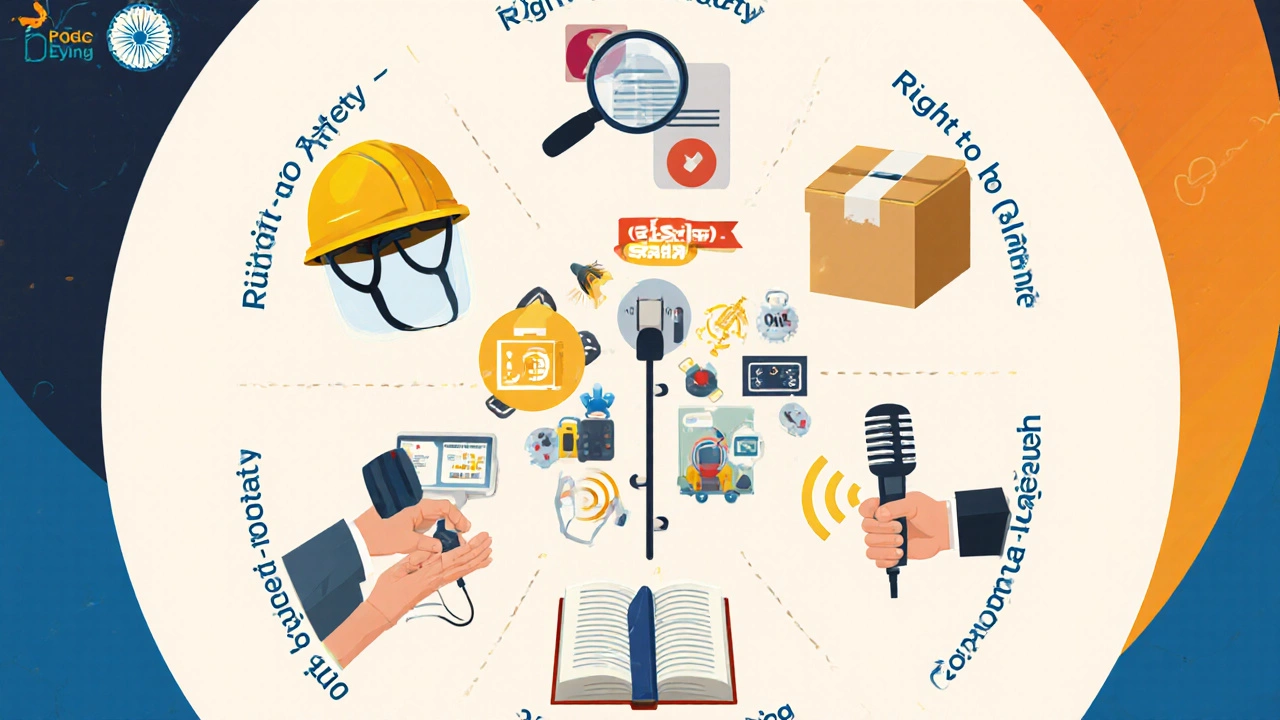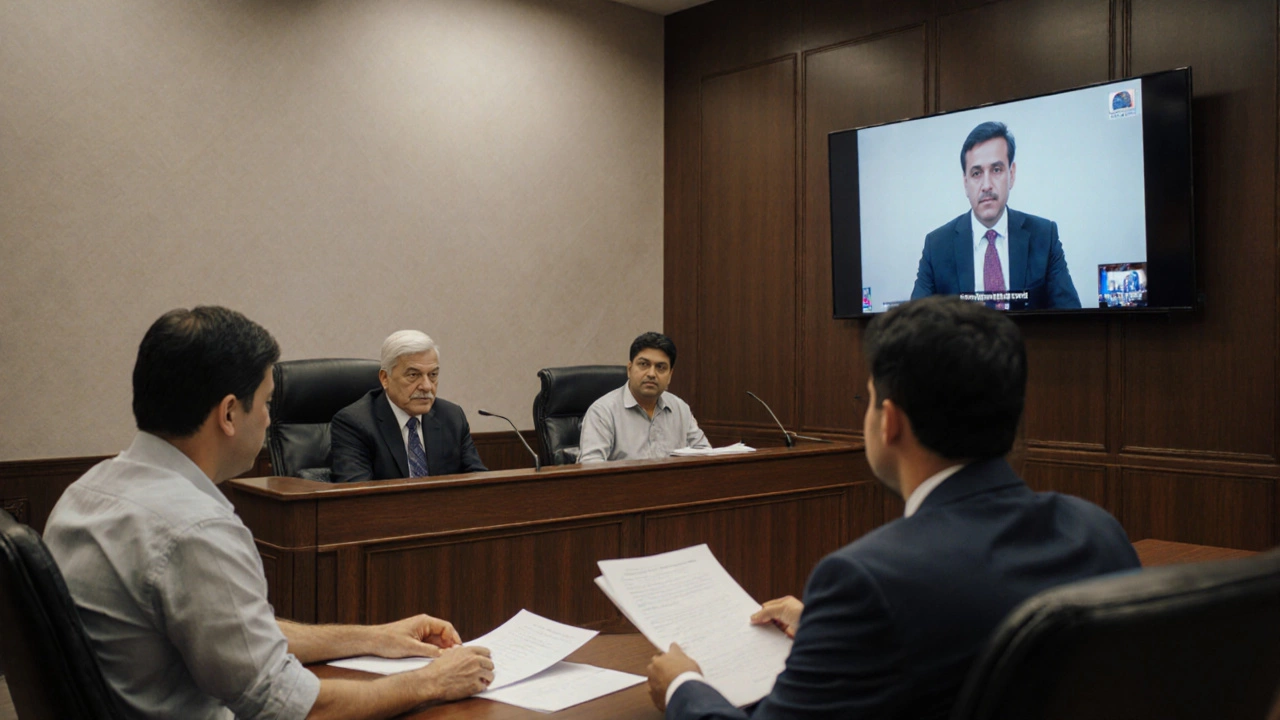Consumer Rights Compliance Checker
Your Rights Assessment
When you buy a product or hire a service in India, you’re not just a transaction - you have legal safeguards that protect you from fraud, faulty goods, and unfair practices. consumer rights in India are anchored in a modern law framework, backed by dedicated courts and authorities that make sure sellers keep their promises. Below you’ll find a plain‑English rundown of what those rights are, where they come from, and exactly how you can invoke them if something goes wrong.
What "consumer rights" actually mean in India
Consumer Rights in India are a set of legal entitlements granted to any individual who purchases goods or services for personal use. They stem from the principle that a buyer should receive quality, safety, and truthful information, and that any breach can be remedied through a defined legal process. The current backbone is the Consumer Protection Act 2019, which replaced the 1986 law to address online shopping, digital contracts, and stricter penalties for repeat offenders.
Core rights under the Consumer Protection Act 2019
The Act enumerates six fundamental rights that every consumer can claim:
- Right to Safety: products must not endanger health or life.
- Right to Information: sellers must disclose price, features, and terms clearly.
- Right to Choose: you can select from a variety of products at competitive prices.
- Right to be Heard: complaints are heard by consumer courts without bias.
- Right to Seek Redressal: you can get a refund, replacement, or compensation.
- Right to Consumer Education: government agencies must spread awareness about these rights.
The law also defines unfair trade practices, such as false advertising, bait‑and‑switch offers, and hidden charges. Offending firms can face fines up to 10% of their turnover or even imprisonment for repeated violations.

Key institutions that enforce consumer rights
When a dispute arises, several bodies step in to resolve it:
- Central Consumer Protection Authority (CCPA) - a watchdog that monitors market practices, issues guidelines, and can order investigations across the country.
- District Consumer Disputes Redressal Commission (DCDRC) - handles complaints up to₹1crore, typically the first point of contact for most buyers.
- State Consumer Disputes Redressal Commission (SCDRC) - hears appeals from district commissions and cases ranging ₹1crore to ₹10crore.
- National Consumer Disputes Redressal Commission (NCDRC) - the apex consumer court for claims above ₹10crore or matters of national importance.
All these tribunals work on a simple principle: resolve disputes quickly (usually within 90 days) and without the need for a lawyer, though legal representation is allowed.
Step‑by‑step guide to filing a consumer complaint
- Gather evidence - receipts, emails, screenshots, warranty cards, and any communication with the seller.
- Check the jurisdiction - if the purchase price is under ₹1crore, go to your local District Commission; otherwise, approach the State or National Commission.
- Draft a complaint - clearly state your name, contact details, product/service description, the right you believe was violated, and the remedy you seek (refund, replacement, compensation).
- Submit the complaint online via the Consumer Helpline portal or in person at the commission’s office. Pay the nominal filing fee (₹100‑₹500 depending on claim size).
- The commission will issue a notice to the seller. Both parties may be asked to appear for a hearing; you can attend in person or via video conference.
- Decision - if the commission rules in your favor, it will order the seller to comply within a set timeframe. Non‑compliance can lead to additional penalties.
Most complaints are settled at the hearing stage itself, especially when the seller wants to avoid negative publicity.
Common consumer issues and practical tips
| Problem | Relevant Right | Remedy |
|---|---|---|
| Defective electronic gadget within warranty period | Right to Safety & Right to Redressal | Free repair, replacement or full refund |
| Hidden service charges on a bank statement | Right to Information | Demand a detailed breakdown and refund of undisclosed fees |
| Misleading advertisement for a beauty product | Right to Choose & Right to be Heard | File a complaint for false advertising; seller may be fined |
| Online order never delivered | Right to Consumer Education (knowing e‑commerce rules) | Seek order cancellation with full refund; may also claim compensation for inconvenience |
| Substandard food from a restaurant | Right to Safety | Medical expenses reimbursed; restaurant may face closure for hygiene violations |
Tip: Always note the date of purchase and the seller’s return policy. Many disputes disappear when you bring up the policy’s specific clause during the hearing.

Quick checklist before you file a claim
- Keep original invoices and digital receipts.
- Capture screenshots of product listings, advertisements, or chat logs.
- Verify the warranty period and any service‑contract terms.
- Identify the correct forum (District, State, or National) based on claim value.
- Draft a concise narrative - focus on facts, not emotions.
- Know the filing fee schedule; keep a copy of the payment receipt.
Following this checklist can shave weeks off the resolution timeline.
What to expect after the decision
Once the commission orders a refund or compensation, the seller has a legally binding deadline - usually 30days - to comply. If they ignore the order, you can invoke the following enforcement measures:
- Attachment of bank accounts or assets.
- Imposition of daily penalties (interest on the unpaid amount).
- Public disclosure of the violation, which often pushes sellers to settle quickly.
Remember, the consumer courts are designed to be consumer‑friendly, so you are not required to hire a lawyer unless the case becomes highly technical.
Frequently Asked Questions
Which law currently protects consumers in India?
The Consumer Protection Act 2019 is the primary legislation, supplemented by several rules on e‑commerce, unfair trade practices, and the recent amendment of 2020 that introduced the Central Consumer Protection Authority.
What is the monetary limit for filing a case in a District Consumer Court?
You can approach the District Consumer Disputes Redressal Commission for complaints up to₹1crore (≈USD12,000). Claims above that go to the State or National Commission.
How long does it take for a consumer court to deliver a verdict?
The law mandates a maximum of 90days from filing to judgment. In practice, many cases settle within 45‑60days, especially if both parties cooperate.
Can I claim compensation for mental anguish?
Yes. Apart from a refund or replacement, the courts can award “solatium” - a monetary amount for inconvenience, humiliation, or distress, typically ranging from ₹5,000 to ₹25,000 depending on the severity.
Do I need a lawyer to file a consumer complaint?
No. The consumer tribunals are designed for self‑representation. However, you may consult a lawyer for advice on complex contractual issues or if the seller contests the claim aggressively.
Understanding and exercising your consumer rights doesn’t have to be a legal nightmare. With the right information, a clear plan, and the proper forum, you can turn a bad purchase into a quick win. Keep this guide handy - the next time something feels off, you’ll know exactly what to do.
